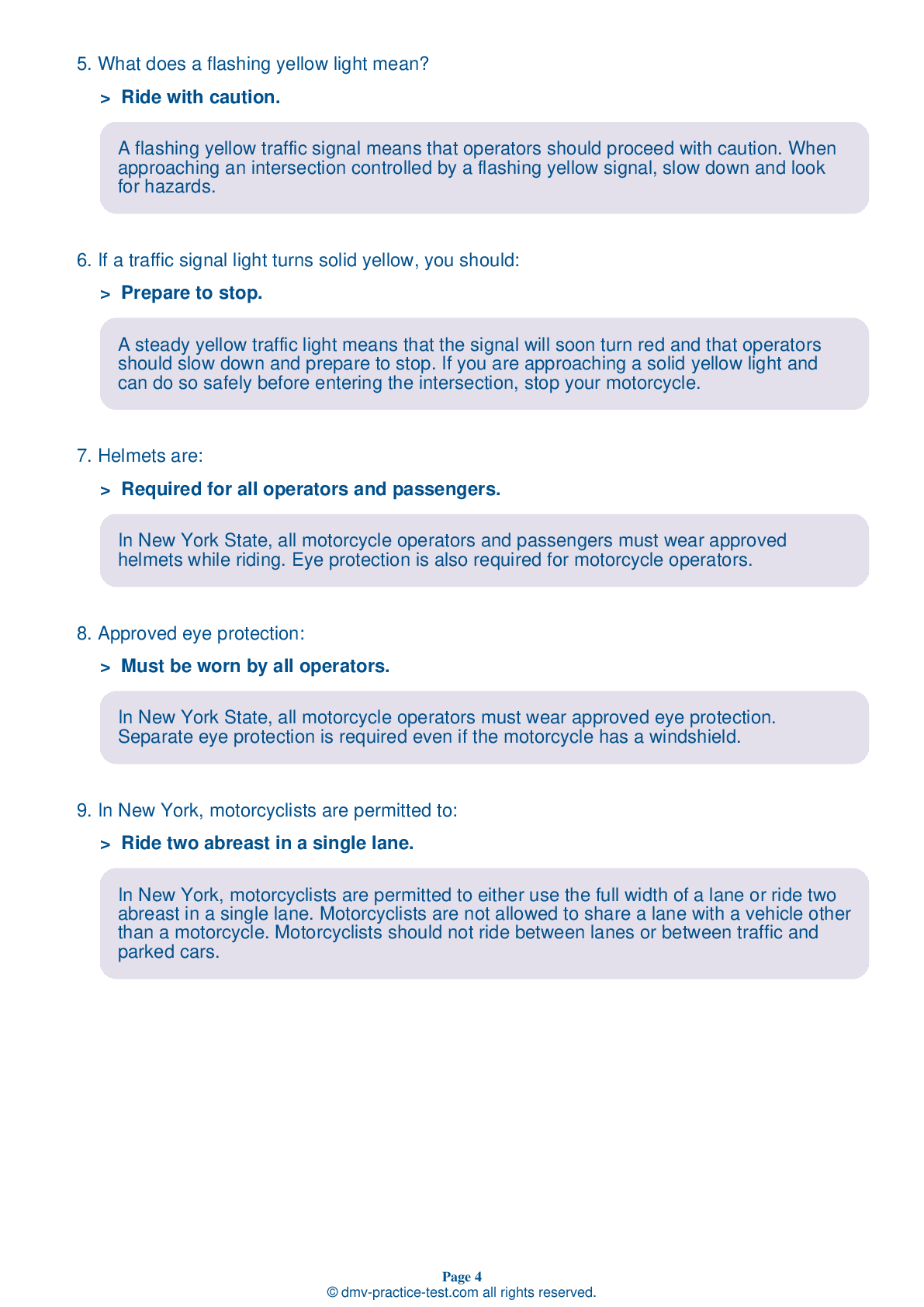Motorcycle Test | License NY 2025 | FREE Online Practice! #5 Page 3 of 4
Take this FREE motorcycle test (license in NY 2025) to check your knowledge of the road rules. To improve your results, download a motorcycle handbook online, study theory, and practice for free on our website. Still worried about how to get a motorcycle license in New York in 2025? Check our website for more sample tests, train as much as possible, and boost your grades!
11 . To stop quickly, you should:
To stop quickly, apply both brakes at the same time.
12 . When braking, you should use:
You should always use both brakes every time you slow or stop.
13 . To prevent getting fatigued on a long ride, you should do all of the following, except:
To reduce the danger of fatigue when riding, dress to protect yourself against tiring weather conditions, such as wind and rain. Limit yourself to no more than about six hours of riding per day and stop for a break at least once every two hours. Avoid taking artificial stimulants since you may experience extreme fatigue when they start to wear off.
14 . Drivers on an entrance ramp may not see you on the highway. What should you do to help an entering driver merge safely?
To reduce the risk of a collision, always allow merging vehicles plenty of space to safely enter traffic. Change lanes away from the entrance ramp if there is room to do so safely. If there isn't another lane available, adjust your speed to open up space for the merging driver.
15 . Which of the following is not a good way for a rider to increase their visibility?
To make yourself visible to other road users, you should wear brightly-colored clothing with reflective materials, use your headlight at all times, and use your signals and brake light properly.
See the exact questions that will be on the 2025 New York DMV exam.
99.2% of people who use the cheat sheet pass the FIRST TIME
Jeneen was tired of paying $5/gallon. She got herself a scooter that required the motorcycle license. She studyed the motorcycle test cheat sheet and passed her test the next day!
Christopher tells us how he knew nothing prior to obtaining the motorcycle study guide, and he only got one question wrong because he clicked on the wrong answer by mistake.



